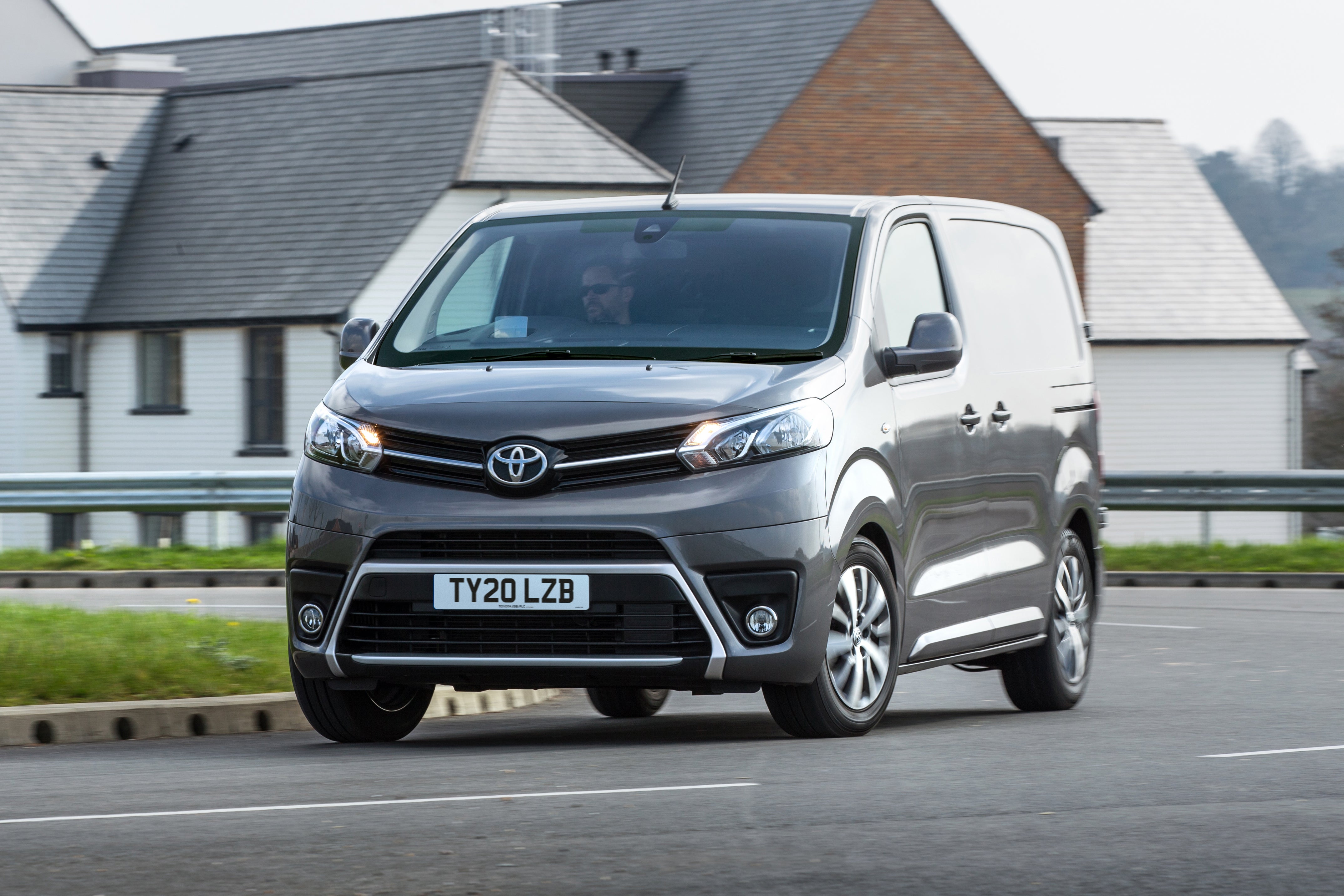Toyota Proace Review
Written by Andrew Brady
Quick overview
Pros
- Excellent payload
- Strong engine range, including electric
- Good levels of standard kit
Cons
- Limited body shapes available
- Compromised driving position
- Interior not the best in class
Overall verdict
"The Toyota Proace has a lot of the attributes that will appeal to those looking for a medium van with all-round ability. It’s cheap to run, a comfortable drive and has the ability to carry up to 1400kg."
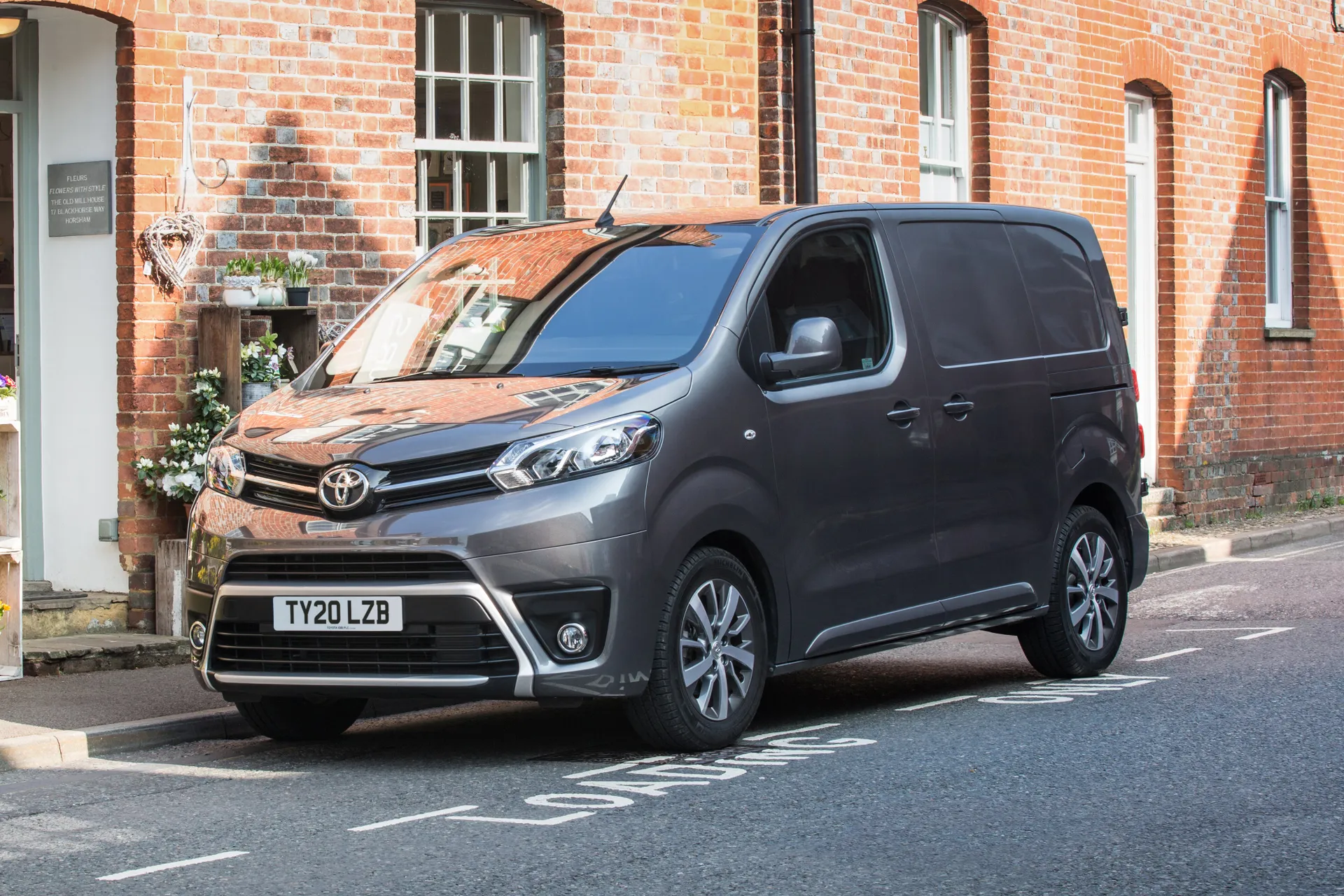
If it looks familiar to other models on the market then that’s because it was co-developed with Peugeot and Citroen so is much the same as the Expert and Dispatch vans. As the PSA Group (Peugeot and Citroen’s parent company) has taken over Vauxhall you can add the Vivaro to this list as of 2019.
The Toyota might be much the same in its design and engine offering but has one ace up its sleeve versus its siblings, though, as it offers a longer warranty than the others – it has five-year/100,000-mile cover as standard where the others only have three years’ cover. Electric models, meanwhile, get an eight-year/100,000-mile warranty for their battery.
There are three sizes of Proace, which are based on two different lengths, while you can also get a crew van and a people carrier version with seating for up to nine. As well as that impressive payload capacity – every version carries at least a tonne and up to 1.4-tonnes – it can tow up to 2.5 tonnes, except for the electric model which is limited to 1 tonne (75 kWh model) or 1.2 tonnes (50 kWh).
Getting into the loading bay is simple thanks to the sliding doors on either side, which come as standard on every model and are wide enough to slot a Euro pallet through. You also get a pair of doors on the rear that open out to a maximum of 250 degrees to fold flat against the side of the van.
You can get up to three Euro pallets into the back of a Proace on the medium and long versions, while the compact will take two. All of them have a decent 1636mm cargo width. Like the other vans on which the Proace is based, there is an opening bulkhead that increases the load length. This takes it up to 4026mm – an increase of 1.16m – on the long version.
The engine range was updated to match up to the latest Euro emissions requirements in 2019, which meant the introduction of a new 1.5-litre diesel engine and slight tweaks to the existing 2.0-litre diesels. There are four options overall, with a 100PS and 120PS version of the 1.5-litre and a 120PS and 180PS version of the 2.0-litre diesel.
The most efficient of the lot is the more powerful 1.5-litre diesel, with fuel economy of up to 44.8mpg, although all the versions can manage up to and over 38mpg. That 1.5-litre engine is the sweet spot of the range, given it boasts a handy amount of torque for carrying around heavy loads in addition to that economy. It’s also quieter than the 1.6-litre engines that it replaced.
There are three trim levels in the Proace range, which mirror Toyota’s other models – it comes in Active, Icon and Design specification. All versions get DAB radio, Bluetooth, a full steel bulkhead, cruise control and seating for three across the front bench. You have to step up to the higher trims to get air conditioning and an alarm.
On the road the Proace drives remarkably like a car for a van its size, with a smooth ride and a decent steering setup. It only comes in one height, which means that it should have no problem getting into low spots around town. The cabin could be better, though, as it has a slightly offset driving position and the seat doesn’t slide back as far as some taller drivers would like.
The Proace doesn’t feel quite as well screwed together in the cabin as the likes of rivals such as the Volkswagen Transporter and the Ford Transit Custom, but it has some very strong attributes in its favour that will mean many will be happy to look past its flaws.
Looking for a used car for sale? We've got 100s of Toyota Approved Used Cars for Sale for you to choose from, including a wide range of Toyota Proace vans for sale. If you're looking for the passenger version, you need our Toyota Proace Verso review.
Is the Toyota Proace right for you?
The Toyota Proace’s plus points are very strong ones, with an excellent payload potential, fantastic towing ability and frugal engines. It will tick a lot of boxes, particularly for those who like to choose their vehicles based on the numbers above all else.
Although the direct equivalents at Peugeot and Citroen might come with a slightly lower headline purchase price, the Proace offers more kit as standard so you don’t have to muck around with options lists. Some of these extras are safety-based, too, which is particularly welcome as these are options boxes are ones that are less likely to be ticked.
The single height will be a boost to anyone who conducts a lot of their business in town. At around 1.9m tall, it will fit under the majority of urban restrictions with space to spare.
What other vans are similar to the Toyota Proace?
The Citroen Dispatch, Peugeot Expert and Vauxhall Vivaro (as of 2019) are all very similar to the Proace – near identical in fact. This is because they are all essentially the same co-developed van, so if you fancy the Proace package but with a slight tweak from a different brand then they are the ones to look at.
The other main contenders in the medium van class include the best-selling Ford Transit Custom and the Volkswagen Transporter. Both of these have more than one height, as does the Renault Trafic and Fiat Talento.
Comfort and design: Toyota Proace interior
"The Proace’s cabin is not one of its strongest areas for a couple of reasons."
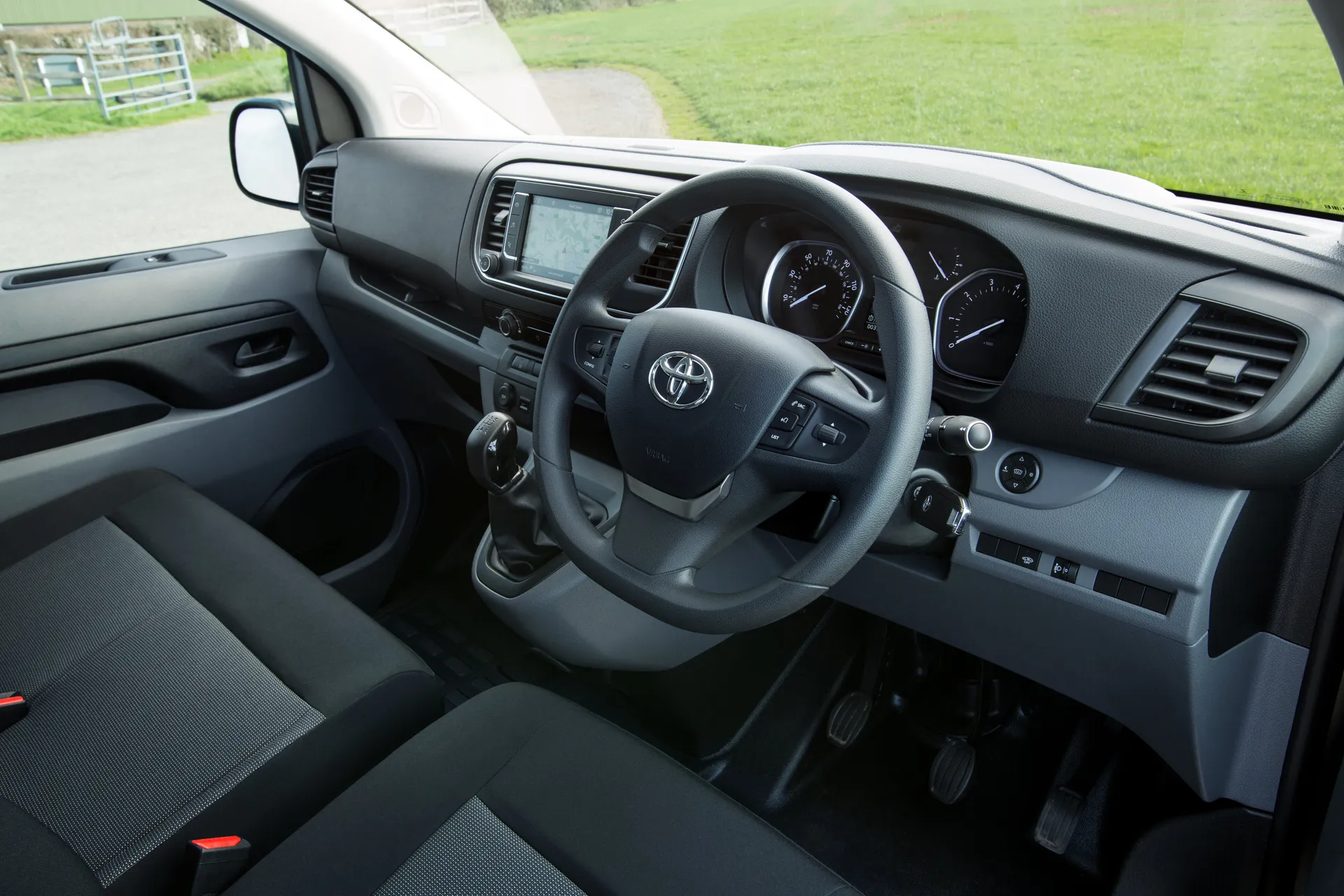
The first is the driving position. Like the Dispatch, Expert and Vivaro, the Proace has a slightly offset driving position. This won’t be so much of an issue on shorter journeys where you leap in and out regularly (although it might feel a little odd) but on a longer trip it might get more uncomfortable.
That said, the wheel has plenty of adjustment and you can move the seat up and down as well as in the more conventional directions, so long as you go for the mid-level trim or higher that is. Taller drivers might wish they could slide the seat back a little further, but there is enough room that they will be able to get in and most will be able to find a good general position. Lumbar support is only optional on the entry-level model but standard on all the others.
The gear lever is placed nice and high and in a natural position for your hand to reach without much effort while the buttons on the steering wheel mean that you can adjust several key functions without much movement either.
Because of the co-development, the interior shouts Peugeot/Citroen more than ‘Toyota’ with the stalks and buttons unlike the ones you will find in the Japanese brand’s passenger car range.
The inclusion of an arm rest as standard is a bonus, while the middle seat folds down to give you a table to work at when you park up. That does mean that the middle seat isn’t quite as comfy as the other two, but that is hardly a rarity for a panel van. The position of the gear lever means that middle passengers don’t get their legs bashed as much when you change gear, though.
Quality and finish
The cabin isn’t the strongest suit for the other vans with which the Proace shares its base. Although Toyota checks over every van before it heads out to make sure it matches up to its standards, it still has to work with the same basic principle.
The parts feel generally well screwed together but certain bits feel a bit cheap and flimsy. The materials themselves are fairly solid, though, so should withstand heavy items being bashed against them, as would happen if you slot them through from the main load area.
There are other elements that don’t feel as solid as you would hope, too, like the side sliding doors, and overall it doesn’t give over the same feeling of quality as you get in a Ford Transit Custom or a Volkswagen Transporter.
There is little difference between the cabin appearance on the bottom two grades but the range-topping version gets a couple more flourishes. The top and bottom part of the dash can be finished in different colours while there is a metallic surround to the seven-inch touchscreen. The fundamental design remains the same though.
Infotainment: Touchscreen, USB, nav and stereo in the Toyota Proace
The seven-inch touchscreen comes as standard on the Design model and as an option on the mid-range Icon. It isn’t available at all on the entry-level Active, though.
It is the same system that appears on the rest of the Peugeot/Citroen models, which means it is not the quickest or the most modern of setups but it is still clear and easy enough to read that operating it doesn’t take too long to figure out.
The system is a TomTom one, which means that it is simple to navigate. The shortcut buttons down either side take you to the main functions swiftly and easily on the move, too.
You only get the screen with satellite navigation – there is no version that just comes with the screen – and it also comes with Apple Carplay and Android Auto. This means that if the in-house sat-nav is not to your taste then you can stream one off your phone.
Because you only get the one 12V socket in the cab, you can only plug the one thing in at a time, which means you might end up having to buy an adaptor or juggle leads if you want to charge a portable sat nav while you are on the move.
Space and practicality: Toyota Proace boot space
Because of the relatively low height of the Proace, the cabin can feel a little dark and tight on space, but it is just an illusion – there is plenty of head room up front for all three passengers.
You can get three in all versions of the Proace. Where some models in the medium van class only have two seats, every Proace comes with a double passenger seat. The middle seat might be marginally less comfy than the other two, but there is an acceptable amount of legroom thanks to the high position of the gear lever.
The storage space in the cabin could be a bit better, with the plentiful cubbyholes that are dotted around feeling generally fairly small. The door bins are useful and deep, and there is storage under the passenger seats but the gloveboxes aren’t that big. The cupholders are positioned annoyingly up high on the dash, and are both at extreme sides of the cabin so you have to stretch to reach them.
The loading bay is a real forte for the Proace. The maximum payload of 1400kg is available on both the Medium and Long versions and is about as good as you get for this class of van. The internal dimensions are good, too. The Compact will take two Euro pallets while the other two will both take three. You’ll be able to slide those pallets in through the side door, too.
All bar the basic model come with the Smart Cargo system that lets you extend the loading length by just over 1.6m, meaning you get 4026mm of load length in the Long model, 3674mm in the Medium and 3324 in the Compact.
The bulkhead is a full steel affair on the basic version but all the other models come with a mesh grille that allows you to see through the rear windows.
Handling and ride quality: What is the Toyota Proace like to drive?
"The Proace is impressively car-like to drive in some senses, which is thanks to it being based on the same underpinnings as the Peugeot 308 passenger car. "
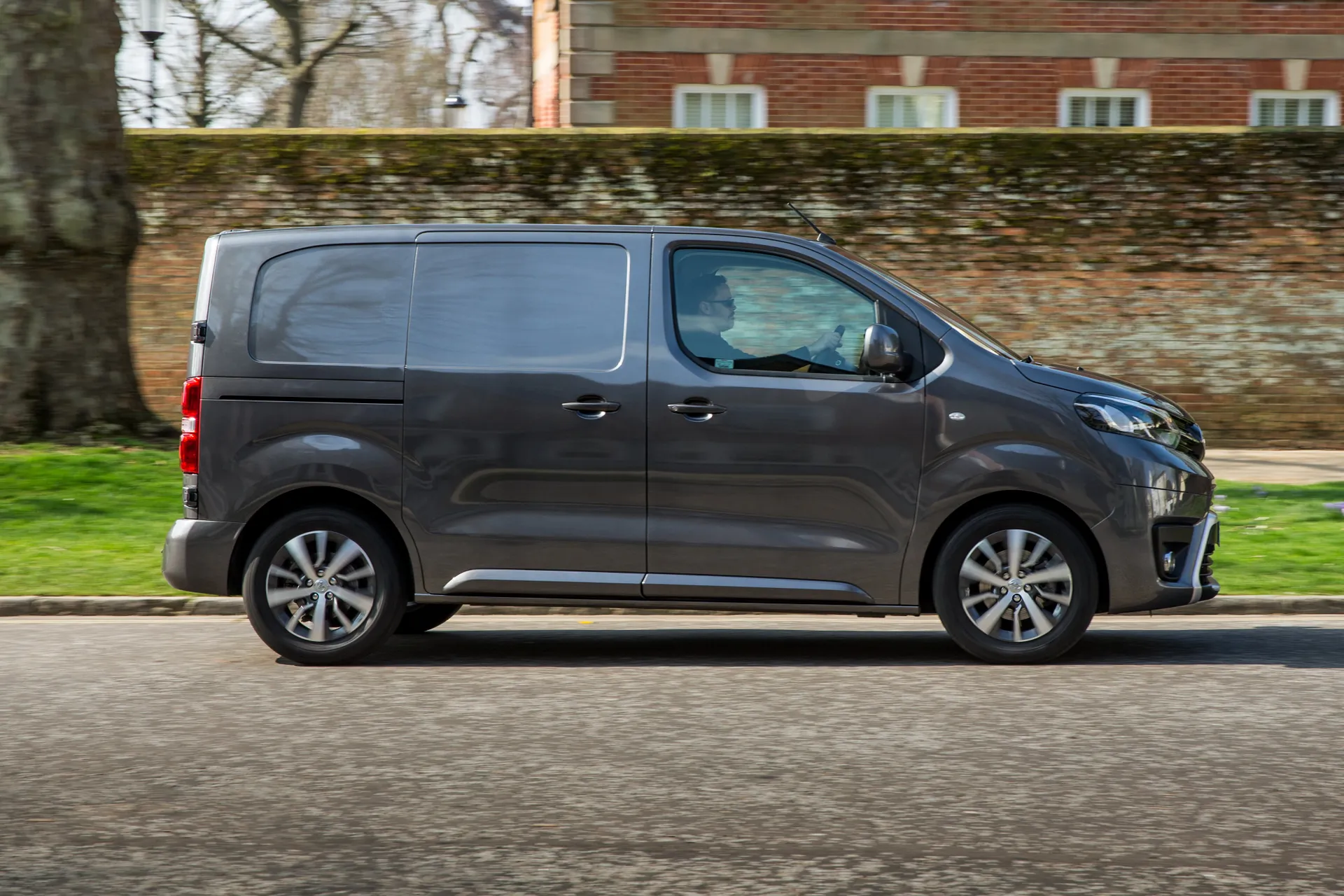
The suspension is impressively comfortable, regardless of how much of a load you have in the back. Vans have been known to bounce around more when the rear compartment is empty, but the Proace manages, most of the time, to maintain its composure even when you’re heading back from a drop-off with nothing left in the cargo area.
This controlled suspension means that the Proace manages to keep bodyroll in check, too, so you can approach a corner with confidence and carry some speed around it without chucking the load all over the place. There are two different wheel sizes, but whether you go for the standard 16-inch steel rims or the 17-inch alloys of the Design model you won’t notice a difference to the ride.
There is only a front-wheel drive version of the Proace, but it manages to retain good levels of grip in usual road-going circumstances.
The steering is responsive and direct, if lacking in feedback. This means that it doesn’t feel quite as heavy as you might want through faster corners. Overall, though, it is sharp enough that it is easy to pilot around town. It comes with a relatively tight turning circle, too – 11.3m on the shorter model and 12.4m on the medium and longer versions.
The electric models are great for city centre driving thanks to their easy performance off the line and single-gear transmission that makes them drive like an automatic. They run almost silently and the B drive mode means the van slows itself – using its regenerative brakes – when you take your foot off the accelerator pedal. Plenty of cars are less relaxing city companions.
What engines and gearboxes are available in the Toyota Proace?
The current engine range in the Toyota Proace matches that of the Citroen Dispatch and Peugeot Expert, so if you were hoping for one of Toyota’s hybrid engines then you’ll be disappointed. That said, it is available as an electric model with either a 50 or 75kWh battery.
The entry-level engine is the 1.5-litre diesel with 100PS or 120PS, further up the range you get a 2.0-litre diesel with either 120PS or 180PS. The three lower-powered models are all offered with a six-speed manual gearbox while the highest-powered version comes with an eight-speed automatic ‘box.
If you'll do most of your work in town – especially one with a low emissions zone – then the electric model makes loads of sense. Both the large and small battery model come with a 136PS motor that gets the Proace from 0-62mph in 13.3 seconds, although this number doesn't do the Toyota justice for how nippy it feels off the line.
The 1.5-litre engines were introduced in 2019 to meet with the latest Euro 6d emissions requirements. When the Proace was launched in 2016 it came with a pair of 1.6-litre diesel engines instead. The replacement is a welcome one on several fronts. The 1.5-litre is not only smoother and quieter but the lower powered version of the 1.6 (there was a 95PS and a 115PS model) didn’t have enough oomph to deal with the combination of a full loading bay, hills and any kind of overtaking.
The 1.5-litre engines are far better, and the higher-powered of the two is the pick if you want to go for economy above all else. It still has enough torque to deal with getting up to speed on the motorway, though.
It is the 2.0-litre engines that have the biggest payload, though, so the 120PS version is the one that makes most sense if you want to maximise the ability to haul around a load of kit.
The six-speed gearbox is an upgrade over the old five-speed version that some of the older engines came with too. It is smooth and easy to operate where the old ‘box was slightly clunky and slow.
The eight-speed automatic is an excellent gearbox, mainly for its smoothness. It does occasionally seem a bit hesitant to change gear, but there are paddles on the wheel so you can give it a prod in the right direction if needs be.
Refinement and noise levels
The Proace is impressively refined when it comes to noise in the cabin. The slight exception is the older 1.6-litre diesel engine, which is a bit louder at tick-over and under hard acceleration.
The more modern engines are quieter, though, and the overall ambiance is very good for a commercial vehicle. The higher trims are marginally quieter, which is down to extra insulation on the windscreen, which is designed to keep that bit more sound out. It’s not as if the Active is raucously loud, though.
Vibrations levels have been brought down with the latest engines, too, although there was never much to worry about. The motor in the electric motor is the star of the show being almost silent.
Because of that windscreen insulation, and the full-height bulkhead, the Proace keeps road noise at bay, too. The relatively low nature of the van, and the lack of taller versions, means that there isn’t a vast amount of wind noise. The small door mirrors help on this front as well – this is an impressively quiet van on the move.
Safety equipment: How safe is the Toyota Proace?
Entry-level vans normally come with little in the way of safety kit beyond an airbag for the driver. The Proace goes at least one better than that by offering a passenger airbag, too, with an off switch should you need to disable it.
The other standard safety kit is relatively simple and consistent with rivals, though, with stability control, ABS, hill start assist and a tyre pressure monitoring system included.
The only addition for the mid-level Icon trim is an alarm, and you have to step up to the Design to get the desirable extra kit. This includes a blind spot monitor and the Toyota Safety Sense system. This gives you a head-up display, adaptive cruise control and autonomous braking with a pedestrian detection system. Given this is standard on Volkswagen’s Transporter, and there is no crosswind assist, this isn’t as impressive as some rivals.
The Proace hasn’t been tested by Euro NCAP in its current form. All models get a full-size steel spare wheel.
MPG and fuel costs: What does a Toyota Proace cost to run?
"The most economical engine is the higher powered 1.5-litre diesel, which claims up to 44.8mpg. Next is the lower-powered 1.5-litre at up to 42.2mpg while the 2.0-litre diesels officially average around 38mpg."
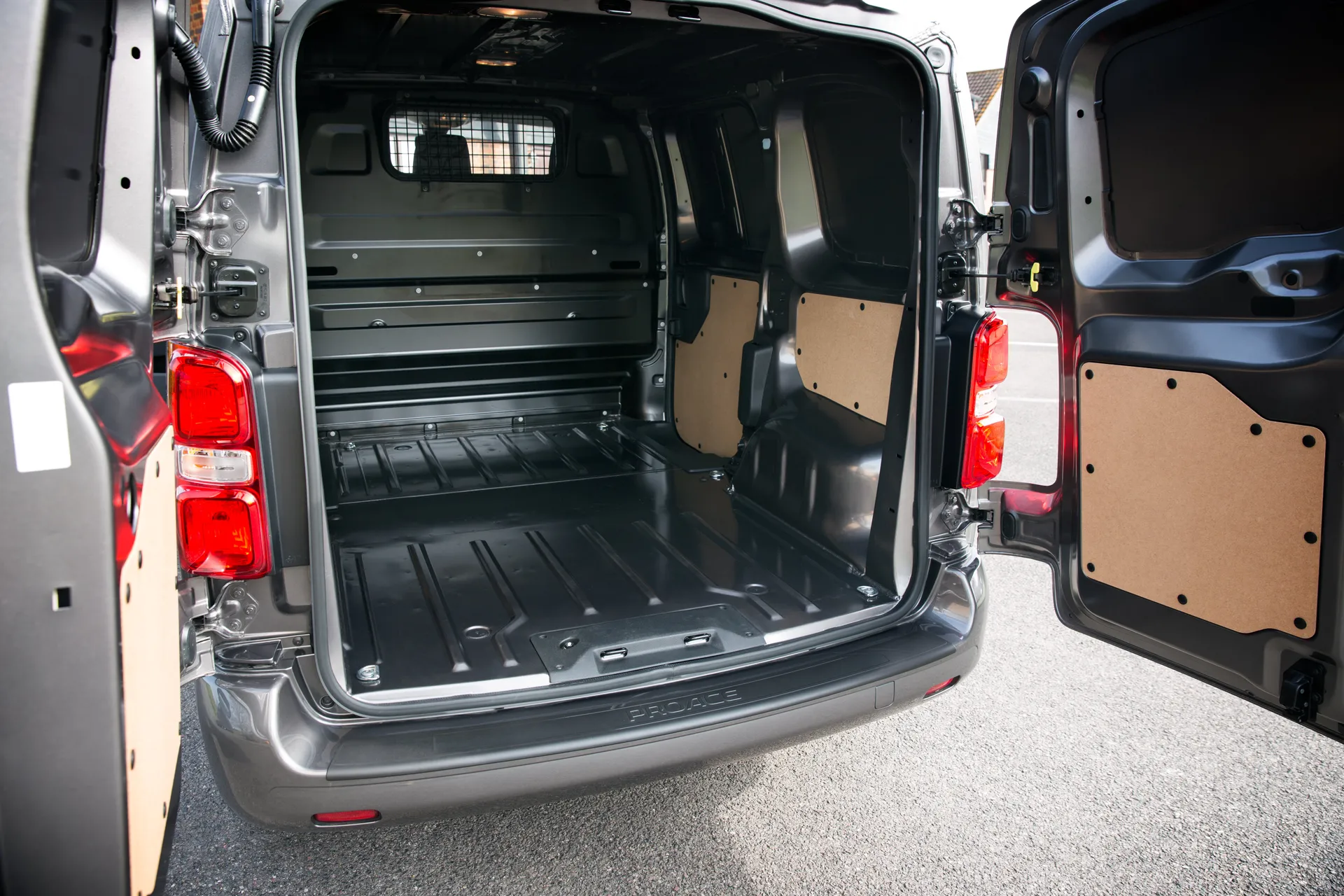
The older models look much more efficient on paper, with economy up around 55mpg. However, it is worth noting that this is because the old engines were rated under the more unrealistic NEDC fuel testing regime. A real-world figure of something around 40mpg is more likely.
Meanwhile, the electric Proace with a 50kWh battery has a range of 142 miles, while the 75 kWh model gets up to 205 miles from a charge. Charge times take up to 28 hours using a domestic three-prong plug, but you can cut that down by using a home-installed wall charger (4.75 hours) or a public rapid charger (0.5 hrs).
Insurance groups and costs
The Proace insurance groups range from 37E to 46E, which is higher than the equivalent Peugeot and Citroen models. The highest group that an Expert sits in, for example, is 39E.
As with the other versions, having a higher payload means that you pay more for insurance so paying a little more might be a necessity if you need to carry loads of stuff.
VED car tax: What is the annual road tax on a Toyota Proace?
The Proace qualifies for the flat-rate and low commercial vehicle VED and BIK. This means it doesn’t matter whether you go for a model with higher CO2 or not, and there is no showroom tax to pay.
How much should you be paying for a used Toyota Proace?
"The Toyota Proace hasn’t sold in vast numbers compared to the Citroen and Peugeot equivalents, so it might be tricky to find one on the used market. Three-year old models go for around £11,000 to £12,000."
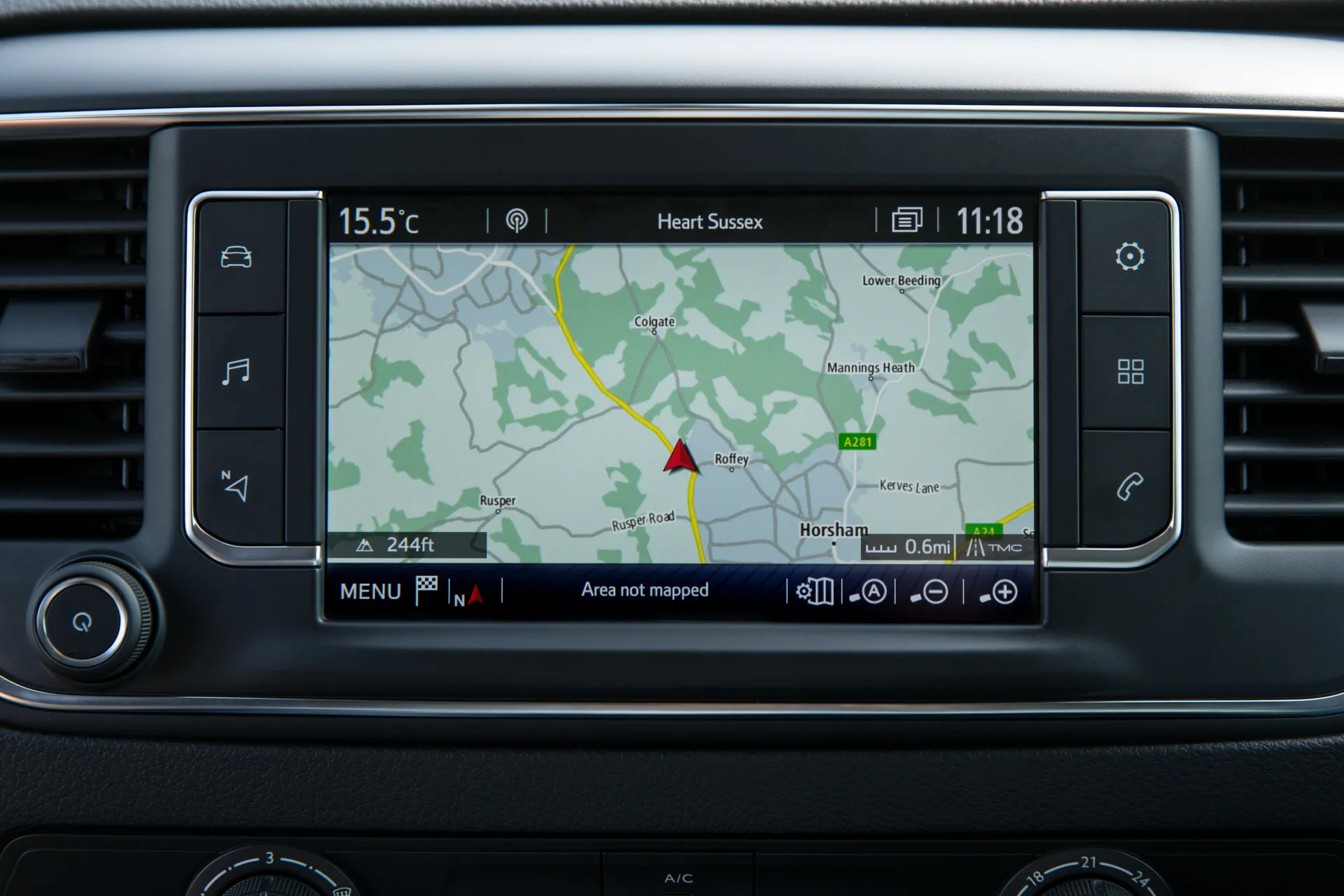
The slightly higher level of kit shouldn’t make a massive difference to the price compared to its siblings, and condition and mileage will have a bigger impact.
Trim levels and standard equipment
It’s a bit all or nothing with the Proace as the entry-level version gets a good level of standard kit, including a second airbag. The kit that it lacks is easily added with a handy pack bringing aircon and the Smart Cargo system that makes the loading bay a much more practical place.
Mid-range Icon models – the only verions available in EV form – get kit like rear parking sensors, as well as auto headlights and wipers.
Design models brings a lot more in the way of safety equipment, which will be a handy boost for those putting in lots of long-distance trips. It is also the only version that comes with the infotainment screen and satellite navigation and Apple Carplay/Android Auto.
The 1.5-litre diesel might be the most economical, but it’s the 2.0-litre that brings more practicality. That huge payload is only available on the bigger engine.
Ask the heycar experts: common questions
Is Toyota Proace a good van?
Can you fit an 8x4 sheet in a Toyota Proace?
Is Toyota Proace front-wheel drive?
Get our latest advice, news and offers
Keep me updated by email with the latest advice, news and offers from heycar.
By submitting you agree to our privacy policy
